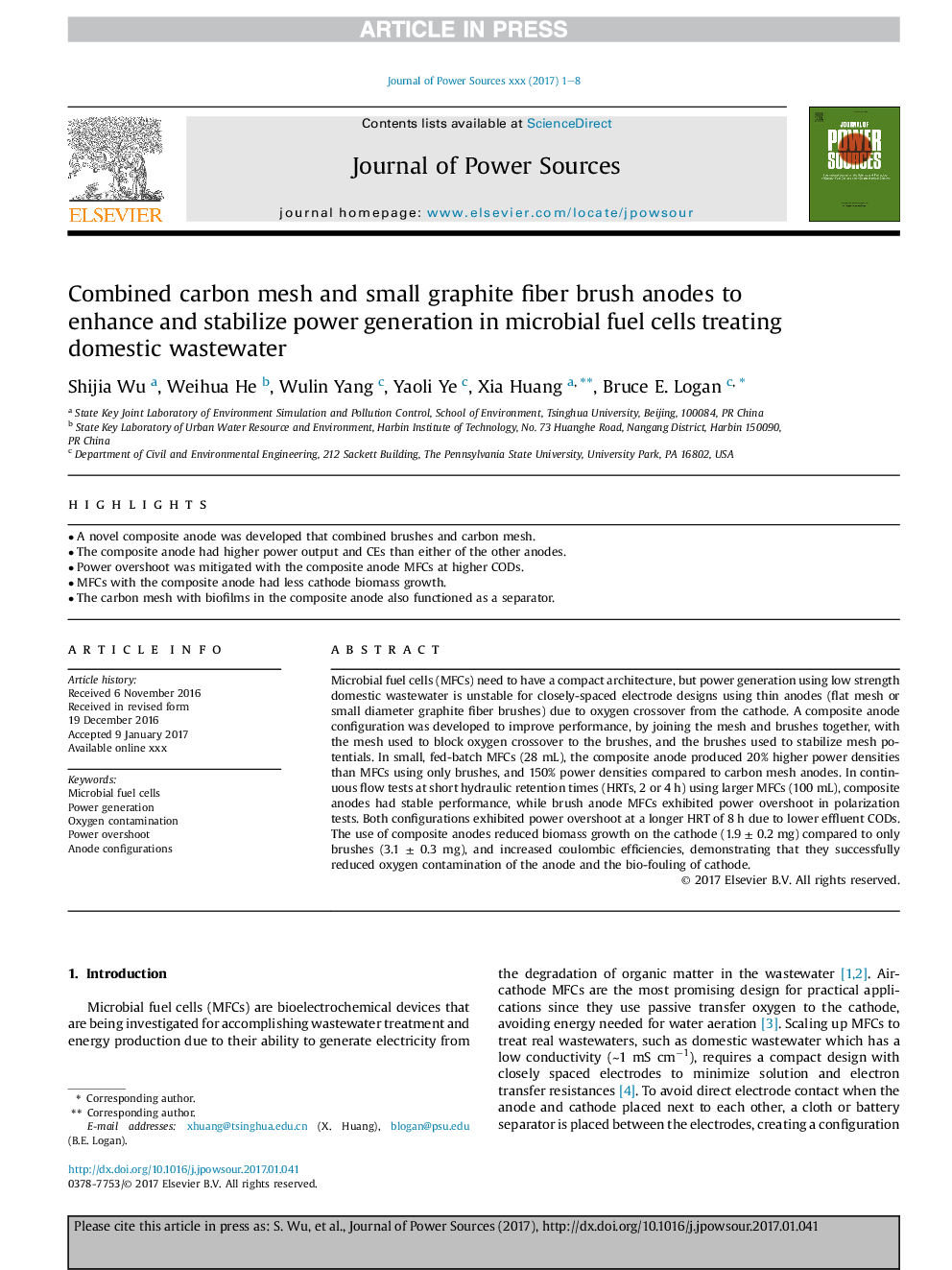| Article ID | Journal | Published Year | Pages | File Type |
|---|---|---|---|---|
| 5149279 | Journal of Power Sources | 2017 | 8 Pages |
Abstract
Microbial fuel cells (MFCs) need to have a compact architecture, but power generation using low strength domestic wastewater is unstable for closely-spaced electrode designs using thin anodes (flat mesh or small diameter graphite fiber brushes) due to oxygen crossover from the cathode. A composite anode configuration was developed to improve performance, by joining the mesh and brushes together, with the mesh used to block oxygen crossover to the brushes, and the brushes used to stabilize mesh potentials. In small, fed-batch MFCs (28 mL), the composite anode produced 20% higher power densities than MFCs using only brushes, and 150% power densities compared to carbon mesh anodes. In continuous flow tests at short hydraulic retention times (HRTs, 2 or 4 h) using larger MFCs (100 mL), composite anodes had stable performance, while brush anode MFCs exhibited power overshoot in polarization tests. Both configurations exhibited power overshoot at a longer HRT of 8 h due to lower effluent CODs. The use of composite anodes reduced biomass growth on the cathode (1.9 ± 0.2 mg) compared to only brushes (3.1 ± 0.3 mg), and increased coulombic efficiencies, demonstrating that they successfully reduced oxygen contamination of the anode and the bio-fouling of cathode.
Related Topics
Physical Sciences and Engineering
Chemistry
Electrochemistry
Authors
Shijia Wu, Weihua He, Wulin Yang, Yaoli Ye, Xia Huang, Bruce E. Logan,
